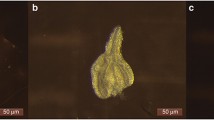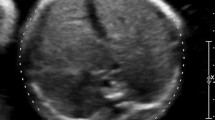Abstract
We recently reported on a new fetal rat model of esophageal atresia (EA) with tracheoesophageal fistula (TEF) induced by prenatal exposure to adriamycin (1.75 mg/kg i. p. injected daily to the pregnant dam from the 6th to 9th gestational days). With this treatment regime, many fetuses were resorbed and the number of associated malformations was very high. The present study demonstrates that similar doses of the drug administered only on the 8th and 9th gestational days allow higher fetal survival (9.7 ∓ 3.9 vs. 6.8 ∓ 4.7 fetuses per litter, P < 0.01) with a similar incidence of EA-TEF (41.2% vs. 56.4%, n. s.) and decreased occurence of associated anorectal and genitourinary malformations. Since this model is an instrument for further investigation of the disturbed cellular and morphogenetic events leading to EA and TEF, the narrowing of the embryologic window obtained by the present study will allow better focusing of the research on the critical period of time involved.
Similar content being viewed by others
References
Beasley SW (1991) Embryology. In: Beasley SW, Myers NA, Auldist AW (eds) Esophageal atresia. Chapman & Hall Medical, London New York Tokyo Melbourne Madras, pp 45–58
Beaudoin AR (1979) Embryology and teratology. In: Baker HJ, Lindsey JR, Weisbroth SH (eds) The laboratory rat. Academic Press New York, pp 75–101
Bonadonna G, Monfardini S, Lena MD (1970) Phase I and preliminary phase II evaluation of adriamycin. Cancer Res 30: 2572–2582
Chang KS, Chang JHT (1994) Animal models of pediatric surgical diseases (editorial). Pediatr Surg Int 9: 307–322
Diez-Pardo JA, Qi B, Navarro C, Tovar JA (1996) A new rodent experimental model of œsophageal atresia and tracheo-œsophageal fistula: preliminary report. J Pediatr Surg 31: 498–502
Karp IK, Oeyen PV, Valone F (1983) Doxorubicin in pregnancy: possible transplacental passage. Cancer Treat Rep 67: 773–777
Khera KS (1985) Maternal toxicity: a possible etiological factor in embryo-fetal deaths and fetal malformations of rodent-rabbit species. Teratology 31: 129–153
Reynolds JEF (1993) Doxorubycin. In: Reynolds JEF, Parfitt K, Parsons AV, Sweetman SC (eds) Martindale: the extra pharmacopeia, 30th edn. The Pharmaceutical Press, London, pp 475–477
Toppari J, Lahdetie J, Harkonen P (1986) Mutagen effects on rat seminiferous tubules in vitro: induction of meiotic micronuclei by adriamycin. Mutat Res 171: 149–156
Author information
Authors and Affiliations
Rights and permissions
About this article
Cite this article
Qi, B., Diez-Pardo, J.A., Navarro, C. et al. Narrowing the embryologic window of the adriamycin-induced fetal rat model of esophageal atresia and tracheoesophageal fistula. Pediatr Surg Int 11, 444–447 (1996). https://doi.org/10.1007/BF00180079
Published:
Issue Date:
DOI: https://doi.org/10.1007/BF00180079




